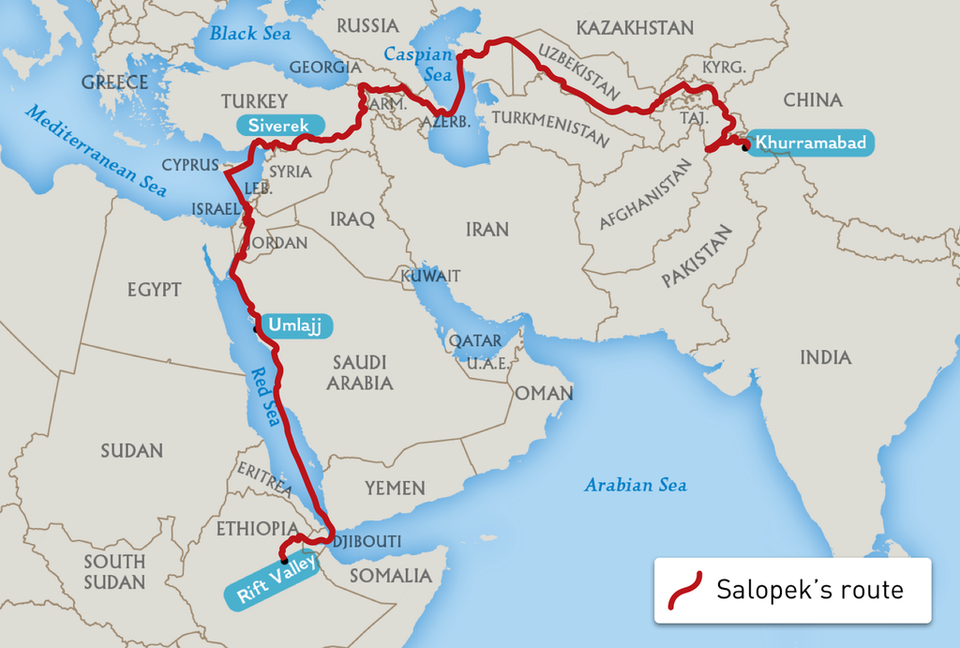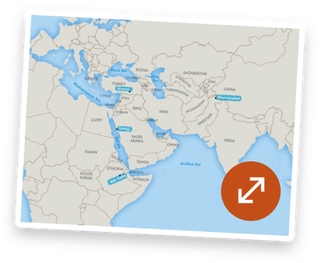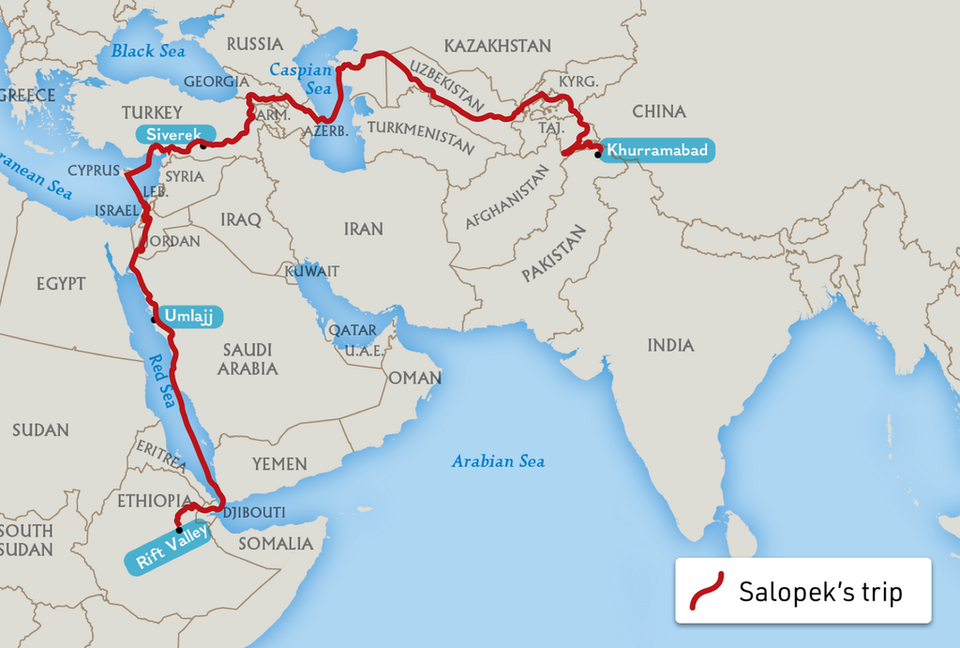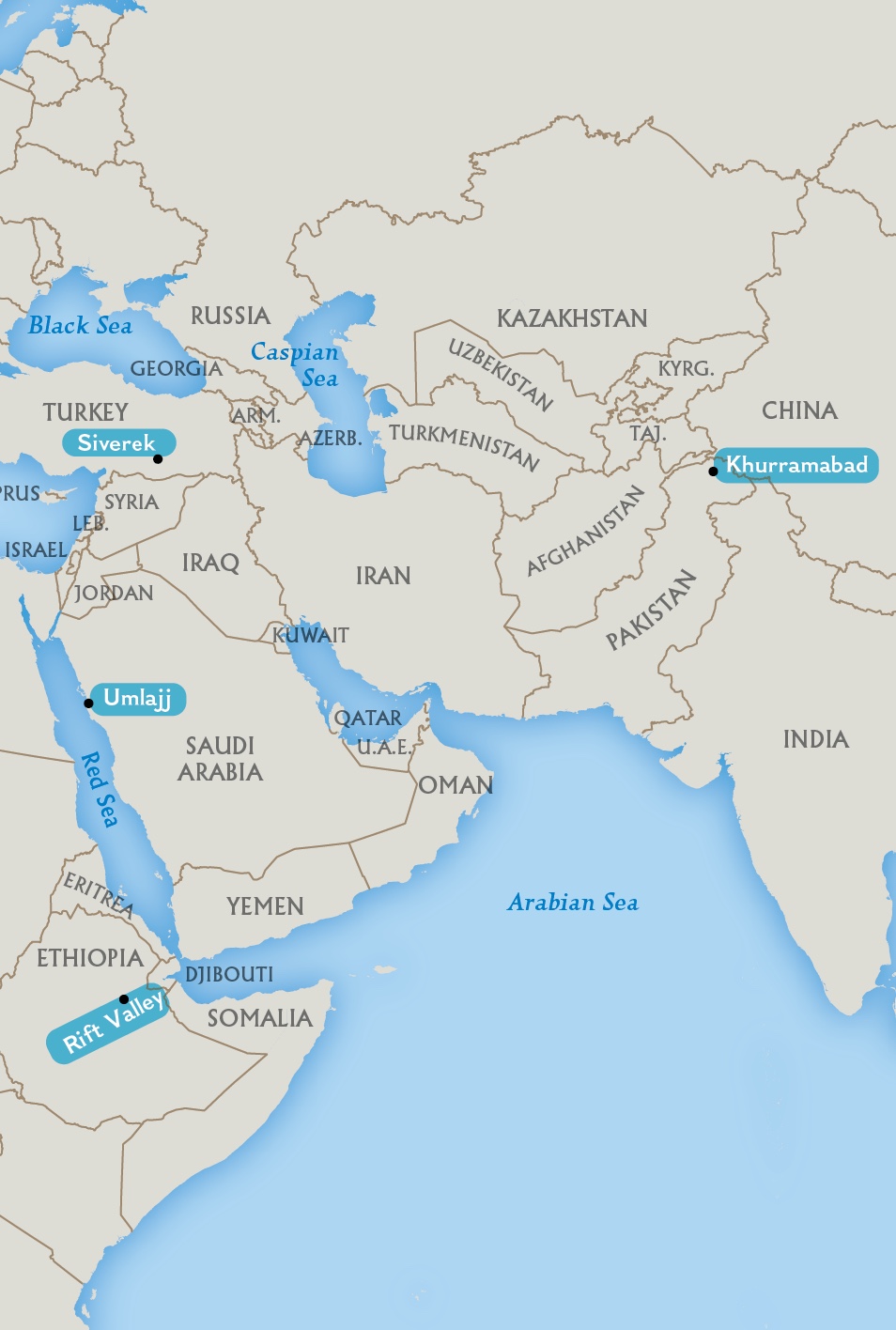
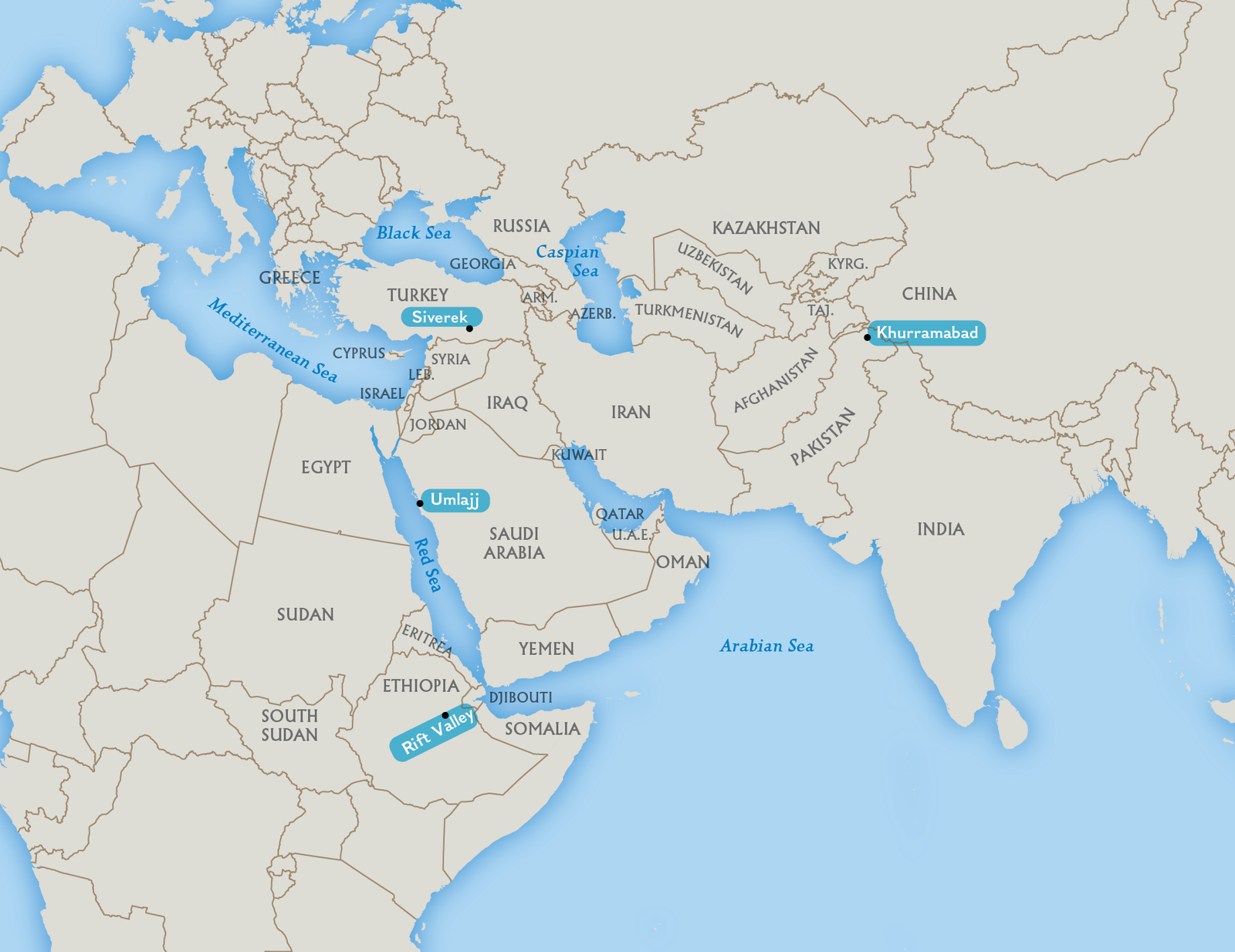
SoleBrothers
RiftValley,Ethiopia
January31,2013
Salopek’stripwilltakemillionsofsteps,sohisfootwearisprettyimportant.InEthiopia,therearefewshoeoptions.
Howdoyoujudgeaman?Lookathisshoes.Shoesrevealtheirwearer’sclass,style,evenjob.Itisodd,then,tobewalkingthroughaplacewheremillionsofpeoplewearthesame-stylefootweareveryday—thecheap,plasticsandalofEthiopia.Manypeoplebuyandwearthembecausetheyareaffordable.
Acoupleofmycamelhandlersonthispartofmyjourneyworelime-greenplasticsandals.ThesurfaceoftheRiftValleyiscoveredinfootprintsstampedbytheseplasticshoes.YetifEthiopia’ssandalsaremass-produced,theirwearersarenot.Theirtrackstelldifferentstoriesandidentifydifferent people.
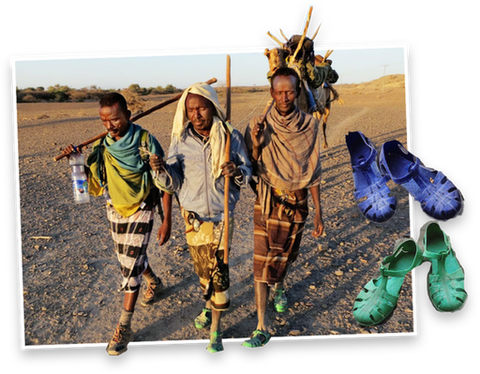
ManyEthiopianswearthesamestyleofshoe,madefrom plastic.
Ourguidekneltdowntheotherdayonthetrail.Pointingtoasinglesandaltrack,hesaid,“La’adHoweniwillbewaitingforusinDalifagi.”He was.
Awad’sRefrigerator
Umlajj,SaudiArabia
October30,2013
Salopekandhisguidesmustcarryeverythingtheyneedastheytravelforweeksatatime.Carryingwateracrossthedesertisessential.Butwhosaidanythingaboutitbeingcold?
ThefirstmodernHomosapiens,orpeople,walkedoutofAfrica.Atthattime,theregion’s seaswerelower.Itshillsweregreener.Whatthepeopleexperienced,wedonotknow.Whatiscertainwastheirneedtocarrywater.
Waterisheavy.Tocarryenoughwateracrossgreatdistancesrequiresstrength.Whatdidthefirsthumansuseascontainers?Nobodyknows.Canteensorbucketsmadeofnaturalmaterials?Agurba,orgoatskinwater bladder?
AwadOmran,mycamelhandler,hasasolutiontoquenchingour thirst.
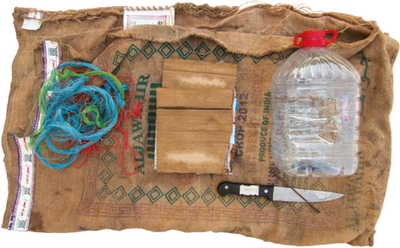
Awad’scold-watercanteenismadefromasack,cardboard,plastictwine,andaplasticwater bottle.
Awadbuildsawater-coolingthermos.It’smadefromjunkdiscardedaroundafarm.Hewrapsalargewaterbottlewithcardboard.Hewrapsburlaparoundthecardboard.Hemakesalonghandlefrom twine.
Awad’sthermosoperatesontheprincipleofevaporation.Wettedandhungonasaddle,itsdampenedcardboardcoolsourdrinkingwater.
Mule-ology
NearSiverek,Turkey
December11,2014
Salopekrarelytravelsalone.He’susuallyjoinedbyaguideandpackanimalsthatcarrysupplies.Here,hewritesabouthismulewhiletravelingthroughTurkey.
Firstthingsfirst:Amuleisnotadonkey.Adonkeyisasmall,long-earedcreaturefromwhichmulesarebredwhenmatedwithahorse.AmuleisananimalIrelyonduringmytravels.Amuleisbigger.Malesarejack mules.Femalesarejennyormollymules.Mulesareusedforallsortsofjobs.Therearecottonmules,sugarmules,miningmules,andmore.
Itdoesn’tmatterwhatyoucallamule,however.Mulesdon’tanswertonames.Eachofmywalkingpartnershascalledourwhitejennybyadifferentname.OneguidecalledherBarbaraforreasonsonlyhecanexplain.AnotherdubbedherSunshine.StillanothercalledherSweetie.JohnStanmeyer,myphotographer,referstoheras Snowflake.
MypreferenceisKirkatir,aTurkishnamemeaning“greymule.”Thetruthisthat,likeallmules,sheanswerstonolabelhandedoutbyhumans.Shecomeswhenshefeelslikeit.Andshedoeswhatshepleases.Thankfully,thatincludescarryingoursupplies!
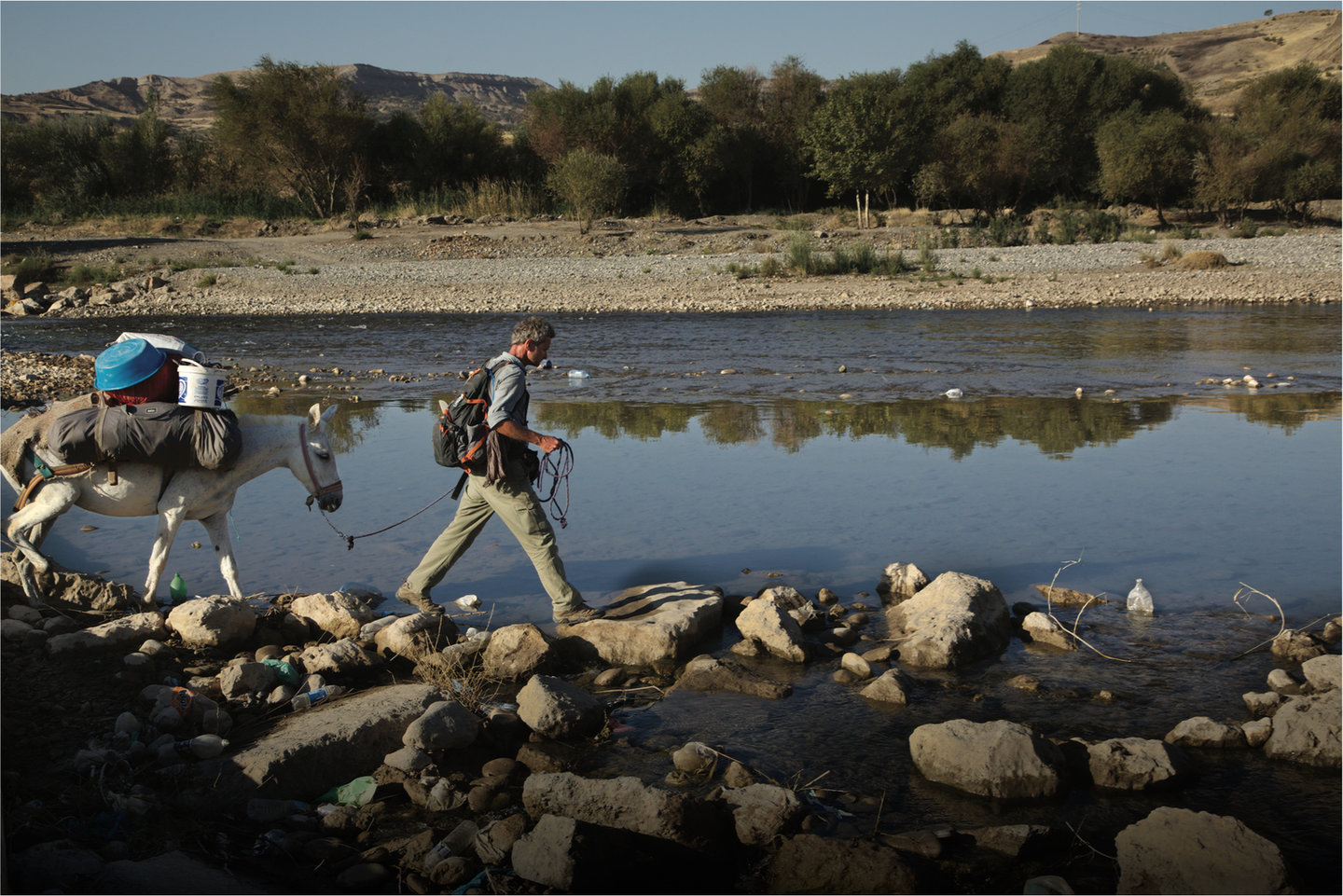
PaulSalopek’smuleinTurkeymaynotcomewhencalled,butsheshouldersmuchoftheburdenonthewalk.
WalkingGrass
NearKhurramabad, Pakistan
January02,2018
Alonghistravels,Salopekmeetsmanypeoplegoingabouttheirdailylives.Here,inPakistan,hecomesacrosssomefarmersharvestingandcarryinghay.
ThemountainrangethatcutsnorthernAfghanistanfromPakistanisacolddesert.Thereislittlerain.Foralltheirthickglaciersandsnow,themountainsaremostlydry.Inlatesummer,glacialmeltstreamsdown,washingawayatvillages,roads,andtopsoil.
Thepeoplewholivehere,manyofthemfarmerswaitforthepasturestodry.Thentheyharvestwildhay.
AmongthefarmersareRehman AliandBibiPari.They areoldernow.Theirsonshavemovedtobigcities.Buttheyremaintoharvesttheirrockyfieldsthemselves.
IcanbarelyhelpParicarryherload.Yet,toher,itseemslikenothing.Shesays,“Thankyou,brothers,”forthesimpleactofwatchingherwork.

Afarmercarrieshaytohishouseabout3.2kilometers(twomiles)away.
